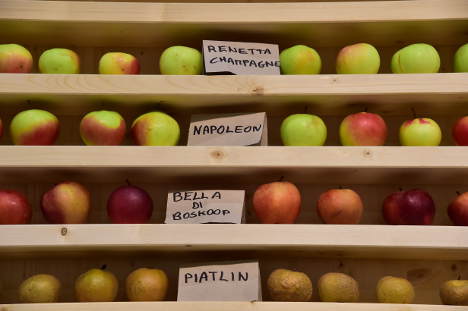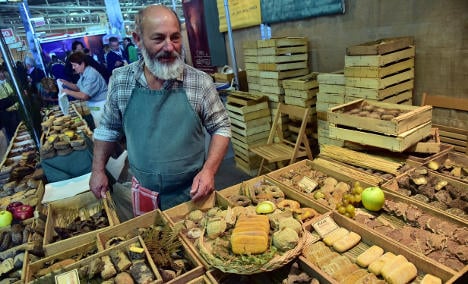Hundreds of thousands of visitors to the north Italian city will be able to explore offerings from across the world at food trucks, on themed tours or at the Via del Gelato, while others work up an appetite at cinema screenings or debates.
The Salone del Gusto fair, which runs until September 26th, is organized by the Slow Food movement and Terra Madre network of food communities, and brings together some 7,000 delegates from 143 countries across five continents.
Slow Food, which is celebrating its 30th anniversary, was founded in 1986 in the Turin region by food critic and sociologist Carlo Petrini in reaction to the opening of the first fast-food restaurants in Italy.
 Photo: Giuseppe Cacace/AFP
Photo: Giuseppe Cacace/AFP
The association aims to educate the public on different tastes, defend biodiversity and promote a food production model that is respectful of the environment and cultural identities.
Today the movement has 100,000 members in 160 countries.
As well as cooking lessons and dinner dates, this year's fair offers dozens of taste workshops, where international dishes are paired with world class vintages, and an enormous market where visitors can meet farmers and artisans.
Horticulturalists will be on hand to offer would-be gardeners tips on starting their own vegetable patches as part of the Slow Food movement's drive to encourage as many people as possible to start growing their own food again.
 The founder of the Slow Food movement, Carlo Petrini. Photo: AFP
The founder of the Slow Food movement, Carlo Petrini. Photo: AFP
Russian identical twins Sergey and Ivan Berezutskiy, chefs who have taken Moscow by storm, will show off their modern take on pre-Soviet cuisine, while Xavier Pellicer from Barcelona transforms meat and fish into side dishes alongside a rich main of vegetables.
More than 900 exhibitors of gourmet specialities will also be present, along with 310 producers of traditional or endangered products protected by the Slow Food label, from Mexico's Serrano peppers to Peru's Amaranth flake.
“The most important battle for the future is the right to food for all, on the mitigation of climate change, protection of biodiversity, and man's relationship with food production and with the earth,” Petrini said before the fair opened.
“All together, with our everyday choices, we have an extraordinary potential”.
He said the movement aims to “mobilize the greatest number of people, to tell them what we do and involve them in what we do, because it's time for concrete action.”




 Please whitelist us to continue reading.
Please whitelist us to continue reading.
Member comments